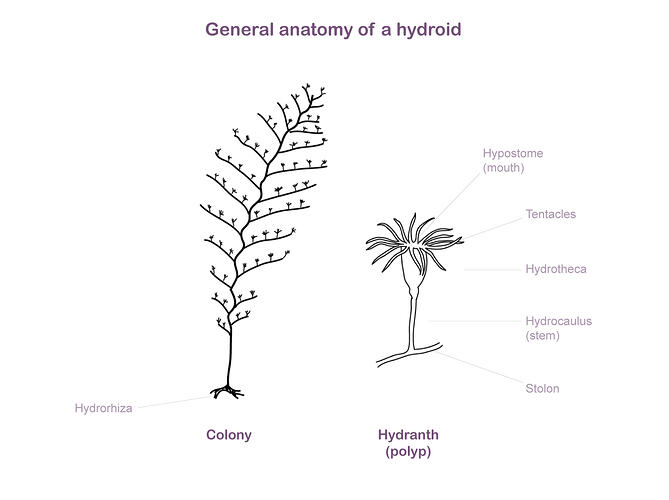General Description
Colony of individual polyps (hydranths) joined by root-like network of tubular stolons at the base. Colony shape is feather-like (pinnate). Colour: stems pale brown, hydrocladia white, gonotheca white. Up to 10 cm high.
Biology
These hydroids were distributed around the world possibly on ships. Their colonies become fertile over summer.
Distribution
Near-Worldwide in subtropical and temperate seas.
Habitat
Subtidal in sheltered bays. Epizoic on polychaete tubes and other invertebrate substrates.
More Information
-
Animal Type
-
Animal SubType
-
Brief Id
Small fragile white stems, flask-shaped gonothecae.
-
Maximum Size
10 cm
-
Habitats
-
Diet
Plankton or Particles
-
Diet Categories
Plankton
-
Hazards
Generally not harmful but still able to sting bare skin.
-
Endemicity
-
Commercial
No
-
Conservation Statuses
DSE Advisory List: Not listed, EPBC Act 1999: Not listed, IUCN Red List: Not listed
-
Depths
Shallow (1-30 m)
-
Water Column Locations
On or near seafloor
-
Taxon Name
-
Scientific Author
(Linnaeus, 1758)
-
Common Name
Hydroid
-
Phylum
-
Class
-
Subclass
-
Order
-
Family
-
Genus
-
Species Name
setacea

